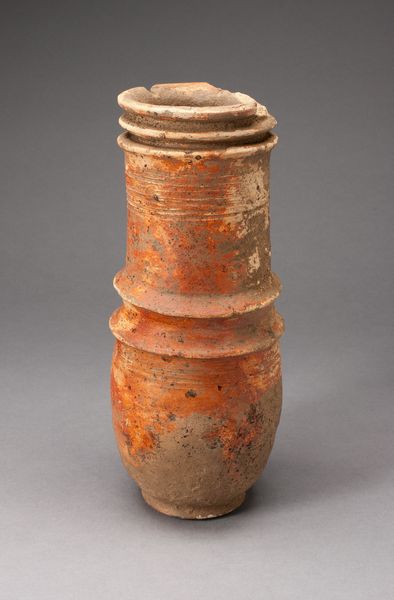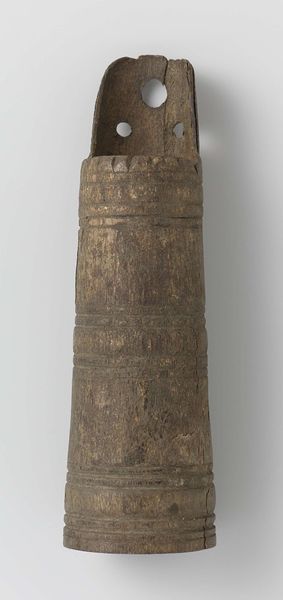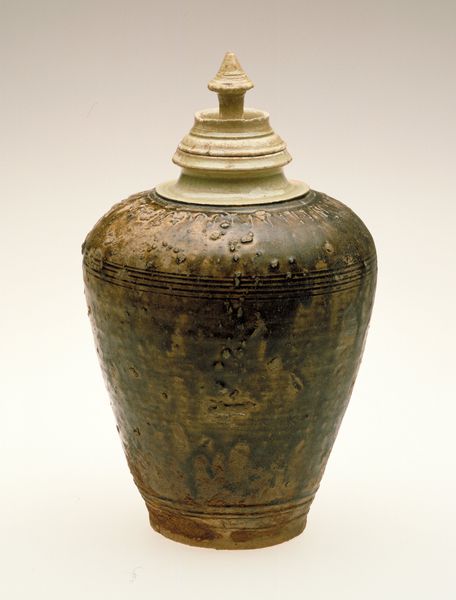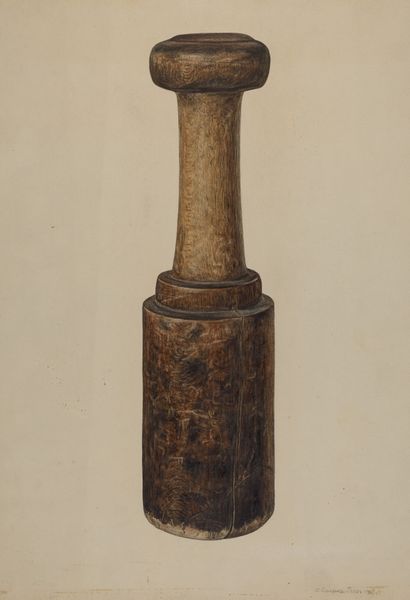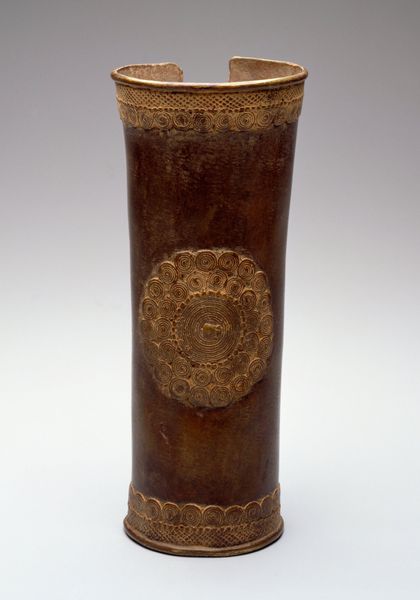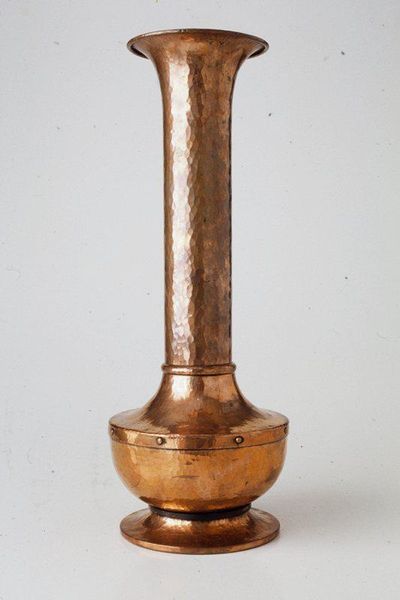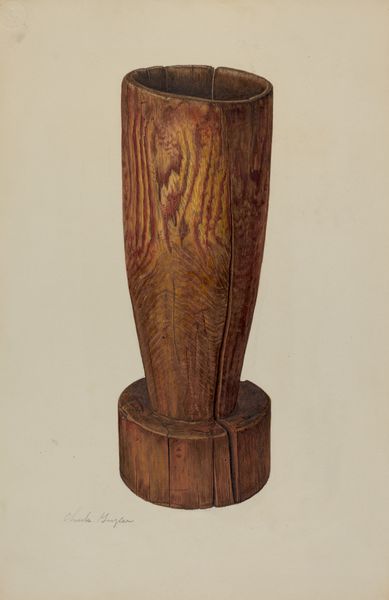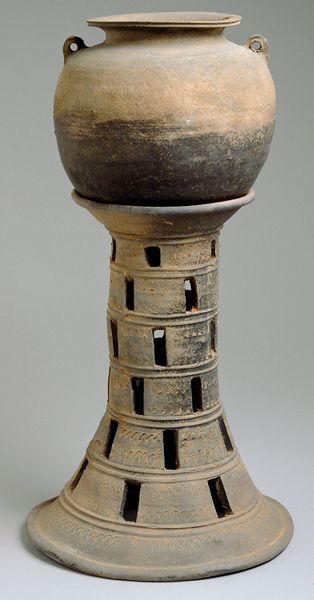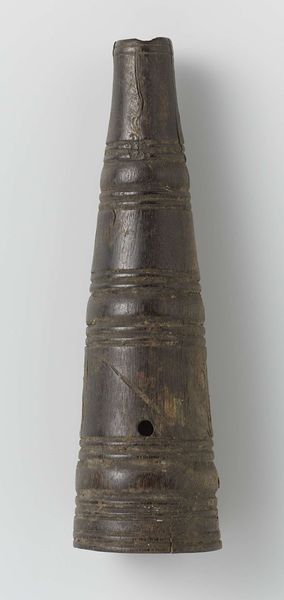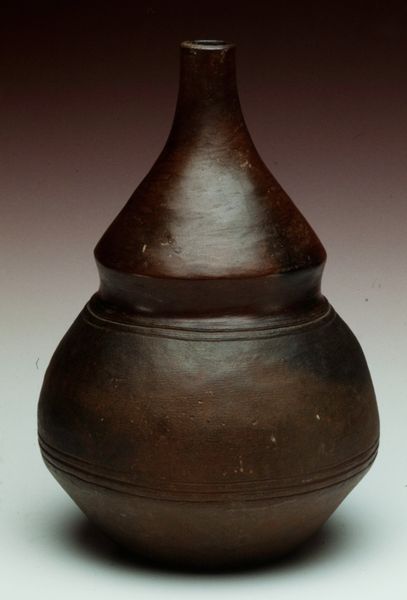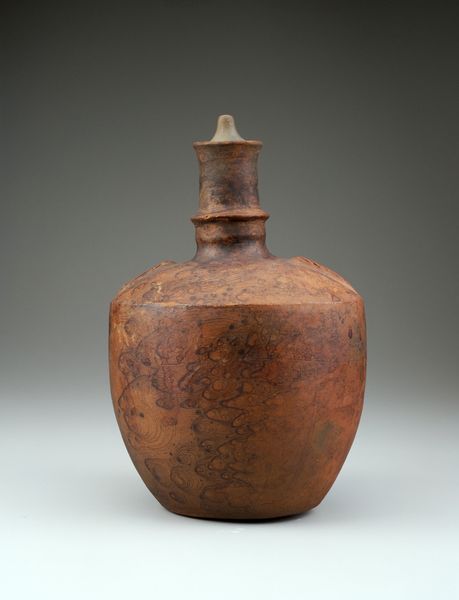
carving, earthenware, sculpture, wood
#
carving
#
earthenware
#
sculpting
#
sculpture
#
ceramic
#
wood
#
earthenware
#
musical-instrument
Dimensions: L.: 112.7 cm (44-3/8 in.); Head Diam.: 25.1 cm (9-7/8 in.)
Copyright: Public Domain
Curator: Looking at this striking drum, likely created by the Mbala people sometime in the 19th century, I'm struck by its simple elegance. The body appears to be carved wood, topped with what seems to be earthenware and some stretched hide. It's currently residing here at the Metropolitan Museum of Art. Editor: Hmm, my first impression is that it appears aged, somber, like it holds many secrets in its wooden belly. The verticality of it also conveys something of the past—the weathering and the slight tilt give it a humble, human presence. Curator: Absolutely. The cylindrical form itself commands a certain stillness, wouldn't you say? The formal design includes simple geometric carving near the top, but mostly relies on the natural grain of the wood to create its aesthetic impact. It gives it such authenticity. The shape, so basic, yet so essential to how sound is produced and projected! Editor: It's true, its aesthetic restraint contributes to its authenticity, but those carvings create an interesting contrast! Those subtle, repeating diamond shapes remind me of woven patterns or scarification marks. I wonder if there is any structural reason for the carvings, or whether it's strictly decorative? Or both! And note the patina; this drum surely bears testament to years of ritual use. Curator: Precisely, I imagine it would have served as a voice for the community, essential to communal celebrations, rites of passage, or perhaps even royal pronouncements. You almost can imagine the beat vibrating against the earthen clay of the instrument. Its role must have given significance to it, something which has translated across centuries. The drum has indeed become a kind of voice, that of its community. Editor: It really prompts contemplation on the very nature of music itself. To transform raw materials – wood, hide, earthenware – into a tool for making art and rhythm, making communal meaning, is incredibly interesting! Looking closer at the carving too, one has to wonder at what else is hidden in plain view? What has not come down to us? What voices haven’t been heard? The mystery remains, thankfully! Curator: What a profound sentiment to echo and contemplate. Editor: Exactly. Let's give others a moment to take a closer look.
Comments
No comments
Be the first to comment and join the conversation on the ultimate creative platform.
